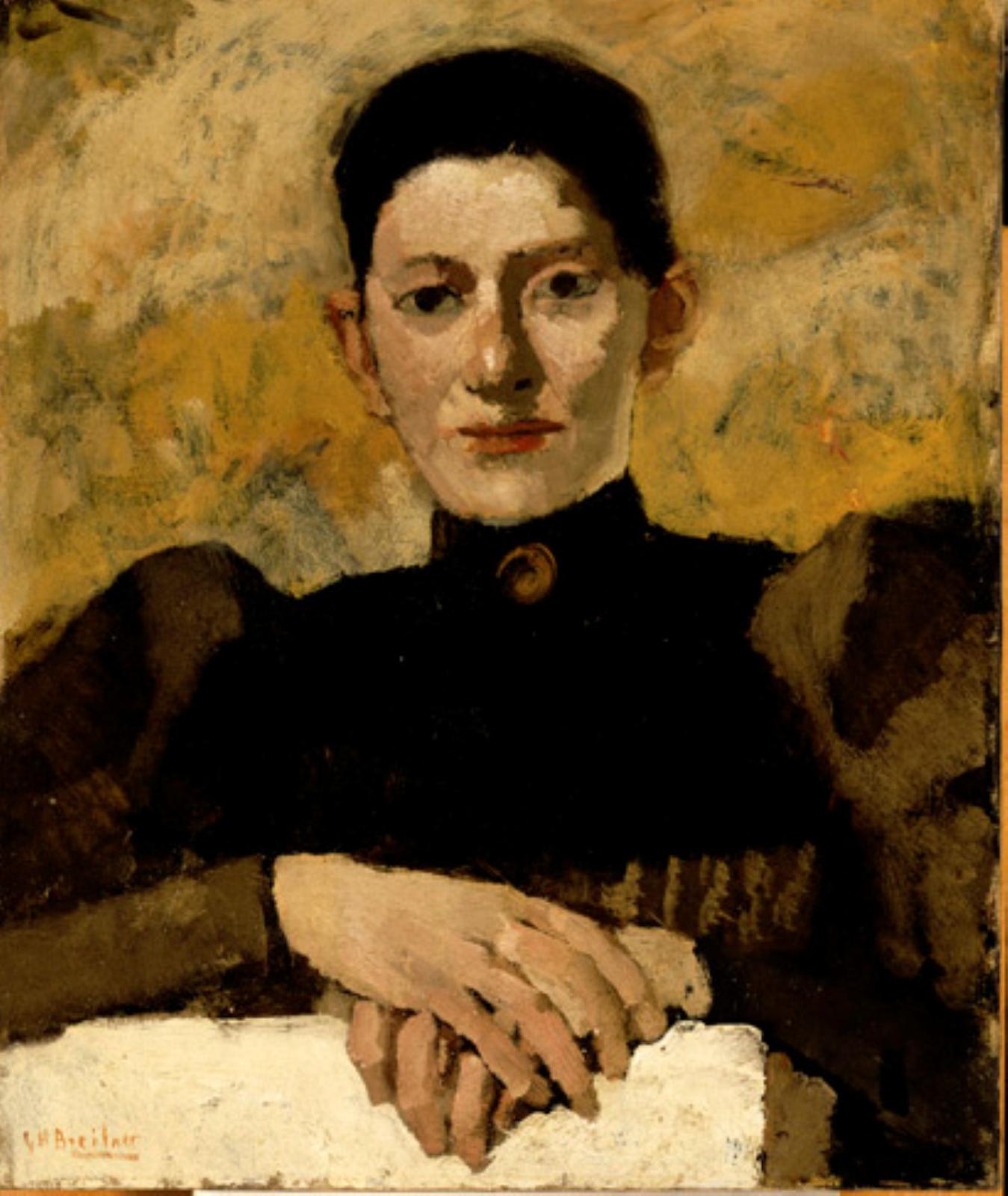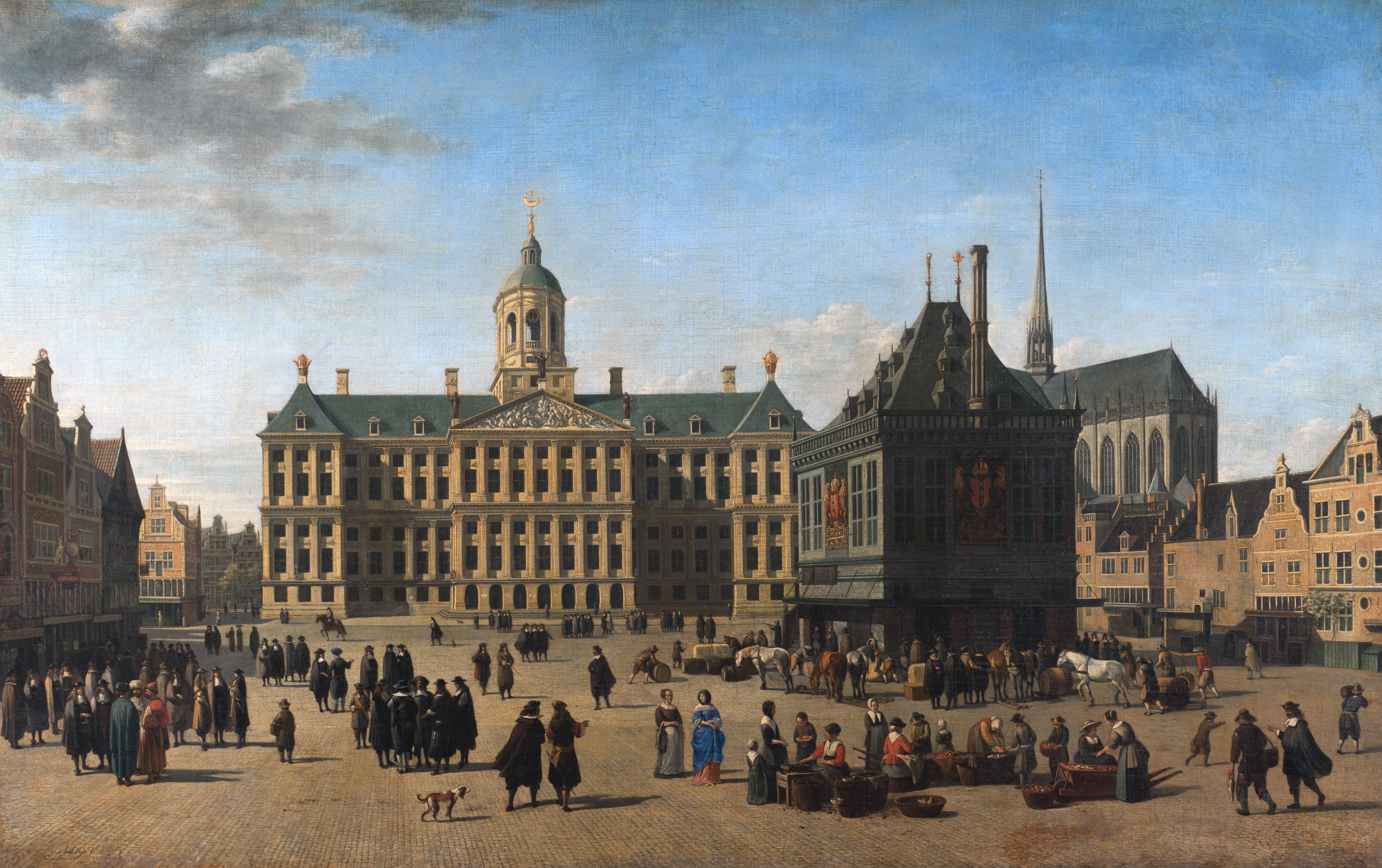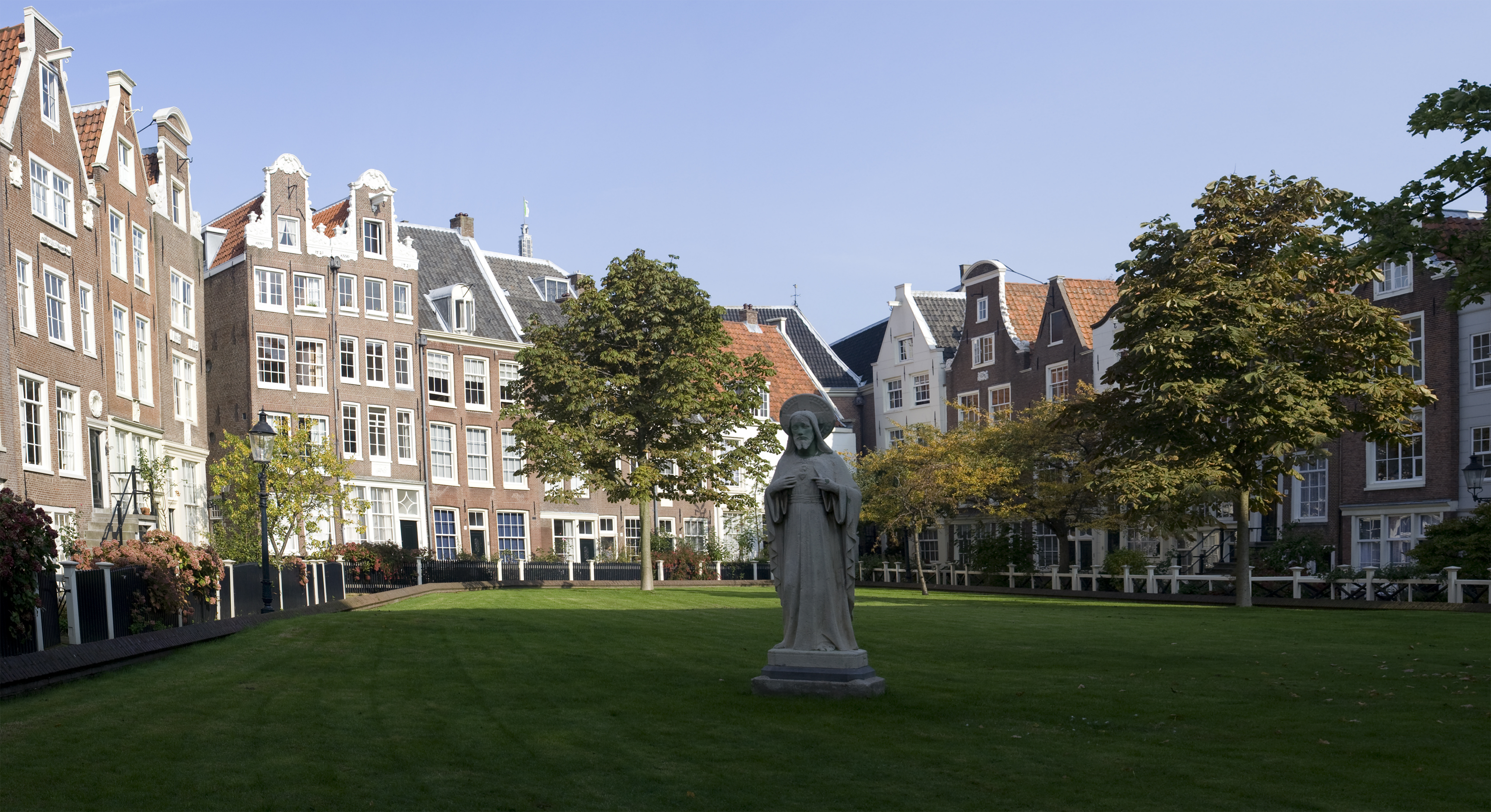|
Eduard Karsen
Johann Eduard Karsen (10 March 1860, Amsterdam - 31 October 1941, Amsterdam) was a Dutch Post-impressionism, Post-impressionist painter, known for his moody scenes featuring villages and farmhouses; usually containing a solitary figure. He was associated with the literary movement known as the "19th-century Dutch literature#The Movement of 1880, Tachtigers" (The Eighties). Biography He was the son of the Romanticism, Romantic painter, Kaspar Karsen. After a long apprenticeship with his father, he went to study at the Rijksakademie in Amsterdam. There, he became part of an influential group of young artists that included Antoon Derkinderen, Willem Bastiaan Tholen, Willem Tholen, Jacobus van Looy, Jan Veth, and Jan Toorop. In 1880, along with Toorop, Dekinderen and Willem Witsen, he became one of the founders of the "Kunstenaarsvereniging Sint Lucas", a society inspired by the Guild of Saint Luke, Guilds of Saint Luke which represented artists in the Low Countries during the R ... [...More Info...] [...Related Items...] OR: [Wikipedia] [Google] [Baidu] |
Eduard Karsen
Johann Eduard Karsen (10 March 1860, Amsterdam - 31 October 1941, Amsterdam) was a Dutch Post-impressionism, Post-impressionist painter, known for his moody scenes featuring villages and farmhouses; usually containing a solitary figure. He was associated with the literary movement known as the "19th-century Dutch literature#The Movement of 1880, Tachtigers" (The Eighties). Biography He was the son of the Romanticism, Romantic painter, Kaspar Karsen. After a long apprenticeship with his father, he went to study at the Rijksakademie in Amsterdam. There, he became part of an influential group of young artists that included Antoon Derkinderen, Willem Bastiaan Tholen, Willem Tholen, Jacobus van Looy, Jan Veth, and Jan Toorop. In 1880, along with Toorop, Dekinderen and Willem Witsen, he became one of the founders of the "Kunstenaarsvereniging Sint Lucas", a society inspired by the Guild of Saint Luke, Guilds of Saint Luke which represented artists in the Low Countries during the R ... [...More Info...] [...Related Items...] OR: [Wikipedia] [Google] [Baidu] |
Arti Et Amicitiae
Arti et Amicitiae (lat .: For Art and Friendship) is a Dutch artist's society founded in 1839, and located on the Rokin in Amsterdam. The Society (also called Arti for short) has played a key role in the Netherlands art scene and in particular in the Amsterdam art schools. It was and is to this day a hub for artists and art lovers in the city of Amsterdam. It is a private institution which supports artists, maintains social networks and offers a pension fund. In recent times it has been one of the venues for the 17th edition of the Sonic Acts Festival. Arti et Amicitiae is also the name of the building. The complex was merged from two separate buildings and given a white neo-classical facade by J. H. Leliman in 1855. History and Structure In 1794 the last Dutch city painter's guild was dissolved during the French occupation by Napoleonic rule. The need for a common meeting place for artists became various clubs and drawing societies. In 1839 the ''Sociëtait Arti et Amicitiae ... [...More Info...] [...Related Items...] OR: [Wikipedia] [Google] [Baidu] |
Painters From Amsterdam
Painting is the practice of applying paint, pigment, color or other medium to a solid surface (called the "matrix" or "support"). The medium is commonly applied to the base with a brush, but other implements, such as knives, sponges, and airbrushes, can be used. In art, the term ''painting ''describes both the act and the result of the action (the final work is called "a painting"). The support for paintings includes such surfaces as walls, paper, canvas, wood, glass, lacquer, pottery, leaf, copper and concrete, and the painting may incorporate multiple other materials, including sand, clay, paper, plaster, gold leaf, and even whole objects. Painting is an important form in the visual arts, bringing in elements such as drawing, composition, gesture (as in gestural painting), narration (as in narrative art), and abstraction (as in abstract art). Paintings can be naturalistic and representational (as in still life and landscape painting), photographic, abstract, narrative, ... [...More Info...] [...Related Items...] OR: [Wikipedia] [Google] [Baidu] |
Cityscape Artists
In the visual arts, a cityscape (urban landscape) is an artistic representation, such as a painting, drawing, print or photograph, of the physical aspects of a city or urban area. It is the urban equivalent of a landscape. ''Townscape'' is roughly synonymous with ''cityscape,'' though it implies the same difference in urban size and density (and even modernity) implicit in the difference between the words ''city'' and ''town''. In urban design the terms refer to the configuration of built forms and interstitial space. History of cityscapes in art From the first century A.D. dates a fresco at the Baths of Trajan in Rome depicting a bird's eye view of an ancient city.Eugenio la Rocca: "The Newly Discovered City Fresco from Trajan's Baths, Rome." ''Imago Mundi'' Vol. 53 (2001), pp. 121–124. In the Middle Ages, cityscapes appeared as a background for portraits and biblical themes. From the 16th up to the 18th century numerous copperplate prints and etchings were made showi ... [...More Info...] [...Related Items...] OR: [Wikipedia] [Google] [Baidu] |
Landscape Painters
A landscape is the visible features of an area of land, its landforms, and how they integrate with natural or man-made features, often considered in terms of their aesthetic appeal.''New Oxford American Dictionary''. A landscape includes the physical elements of geophysically defined landforms such as (ice-capped) mountains, hills, water bodies such as rivers, lakes, ponds and the sea, living elements of land cover including indigenous vegetation, human elements including different forms of land use, buildings, and structures, and transitory elements such as lighting and weather conditions. Combining both their physical origins and the cultural overlay of human presence, often created over millennia, landscapes reflect a living synthesis of people and place that is vital to local and national identity. The character of a landscape helps define the self-image of the people who inhabit it and a sense of place that differentiates one region from other regions. It is the dynamic b ... [...More Info...] [...Related Items...] OR: [Wikipedia] [Google] [Baidu] |
Dutch Male Painters
Dutch commonly refers to: * Something of, from, or related to the Netherlands * Dutch people () * Dutch language () Dutch may also refer to: Places * Dutch, West Virginia, a community in the United States * Pennsylvania Dutch Country People Ethnic groups * Germanic peoples, the original meaning of the term ''Dutch'' in English ** Pennsylvania Dutch, a group of early Germanic immigrants to Pennsylvania *Dutch people, the Germanic group native to the Netherlands Specific people * Dutch (nickname), a list of people * Johnny Dutch (born 1989), American hurdler * Dutch Schultz (1902–1935), American mobster born Arthur Simon Flegenheimer * Dutch Mantel, ring name of American retired professional wrestler Wayne Maurice Keown (born 1949) * Dutch Savage, ring name of professional wrestler and promoter Frank Stewart (1935–2013) Arts, entertainment, and media Fictional characters * Dutch (''Black Lagoon''), an African-American character from the Japanese manga and anime ''Black ... [...More Info...] [...Related Items...] OR: [Wikipedia] [Google] [Baidu] |
19th-century Dutch Painters
The 19th (nineteenth) century began on 1 January 1801 ( MDCCCI), and ended on 31 December 1900 ( MCM). The 19th century was the ninth century of the 2nd millennium. The 19th century was characterized by vast social upheaval. Slavery was abolished in much of Europe and the Americas. The First Industrial Revolution, though it began in the late 18th century, expanding beyond its British homeland for the first time during this century, particularly remaking the economies and societies of the Low Countries, the Rhineland, Northern Italy, and the Northeastern United States. A few decades later, the Second Industrial Revolution led to ever more massive urbanization and much higher levels of productivity, profit, and prosperity, a pattern that continued into the 20th century. The Islamic gunpowder empires fell into decline and European imperialism brought much of South Asia, Southeast Asia, and almost all of Africa under colonial rule. It was also marked by the collapse of the large ... [...More Info...] [...Related Items...] OR: [Wikipedia] [Google] [Baidu] |
1941 Deaths
Events Below, the events of World War II have the "WWII" prefix. January * January–August – 10,072 men, women and children with mental and physical disabilities are asphyxiated with carbon monoxide in a gas chamber, at Hadamar Euthanasia Centre in Germany, in the first phase of mass killings under the Action T4 program here. * January 1 – Thailand's Prime Minister Plaek Phibunsongkhram decrees January 1 as the official start of the Thai solar calendar new year (thus the previous year that began April 1 had only 9 months). * January 3 – A decree (''Normalschrifterlass'') promulgated in Germany by Martin Bormann, on behalf of Adolf Hitler, requires replacement of blackletter typefaces by Antiqua. * January 4 – The short subject ''Elmer's Pet Rabbit'' is released, marking the second appearance of Bugs Bunny, and also the first to have his name on a title card. * January 5 – WWII: Battle of Bardia in Libya: Australian and British troops de ... [...More Info...] [...Related Items...] OR: [Wikipedia] [Google] [Baidu] |
1860 Births
Year 186 ( CLXXXVI) was a common year starting on Saturday (link will display the full calendar) of the Julian calendar. At the time, it was known as the Year of the Consulship of Aurelius and Glabrio (or, less frequently, year 939 ''Ab urbe condita''). The denomination 186 for this year has been used since the early medieval period, when the Anno Domini calendar era became the prevalent method in Europe for naming years. Events By place Roman Empire * Peasants in Gaul stage an anti-tax uprising under Maternus. * Roman governor Pertinax escapes an assassination attempt, by British usurpers. New Zealand * The Hatepe volcanic eruption extends Lake Taupō and makes skies red across the world. However, recent radiocarbon dating by R. Sparks has put the date at 233 AD ± 13 (95% confidence). Births * Ma Liang, Chinese official of the Shu Han state (d. 222) Deaths * April 21 – Apollonius the Apologist, Christian martyr * Bian Zhang, Chinese official and ... [...More Info...] [...Related Items...] OR: [Wikipedia] [Google] [Baidu] |
Digital Library For Dutch Literature
The Digital Library for Dutch Literature (Dutch: Digitale Bibliotheek voor de Nederlandse Letteren or DBNL) is a website (showing the abbreviation as dbnl) about Dutch language and Dutch literature. It contains thousands of literary texts, secondary literature and additional information, like biographies, portrayals etcetera, and hyperlinks. The DBNL is an initiative by the DBNL foundation that was founded in 1999 by the Society of Dutch Literature (Dutch: Maatschappij der Nederlandse Letterkunde). Building of the DNBL was made possible by donations, among others, from the Dutch Organization for Scientific Research (Dutch: Nederlandse Organisatie voor Wetenschappelijk Onderzoek or NWO) and the Nederlandse Taalunie. From 2008 to 2012, the editor was René van Stipriaan. The work is done by eight people in Leiden (as of 2013: The Hague), 20 students, and 50 people in the Philippines who scan and type the texts. As of 2020, the library is being maintained by a collaboration of t ... [...More Info...] [...Related Items...] OR: [Wikipedia] [Google] [Baidu] |
Begijnhof, Amsterdam
The Begijnhof is one of the oldest hofjes in Amsterdam, Netherlands. A group of historic buildings, mostly private dwellings, centre on it. As the name suggests, it was originally a Béguinage. Today it is also the site of two churches, the Catholic ''Houten Huys'' and the English Reformed Church. Earliest times The Begijnhof is the only inner court in Amsterdam which was founded during the Middle Ages, and therefore lies within the Singel — the innermost canal of Amsterdam's circular canal system. The Begijnhof is at medieval street level, which means a meter below the rest of the old city center. It is unclear when exactly the Begijnhof (Beguines' court) was founded. In 1346, the beguines still lived in a house (a document of that time mentioned one ''beghynhuys''). A courtyard was only first mentioned in 1389, probably after the religious status of the city rose due to the Amsterdam Eucharistic Miracle of 1345. Originally the Begijnhof was entirely encircled by water (t ... [...More Info...] [...Related Items...] OR: [Wikipedia] [Google] [Baidu] |







